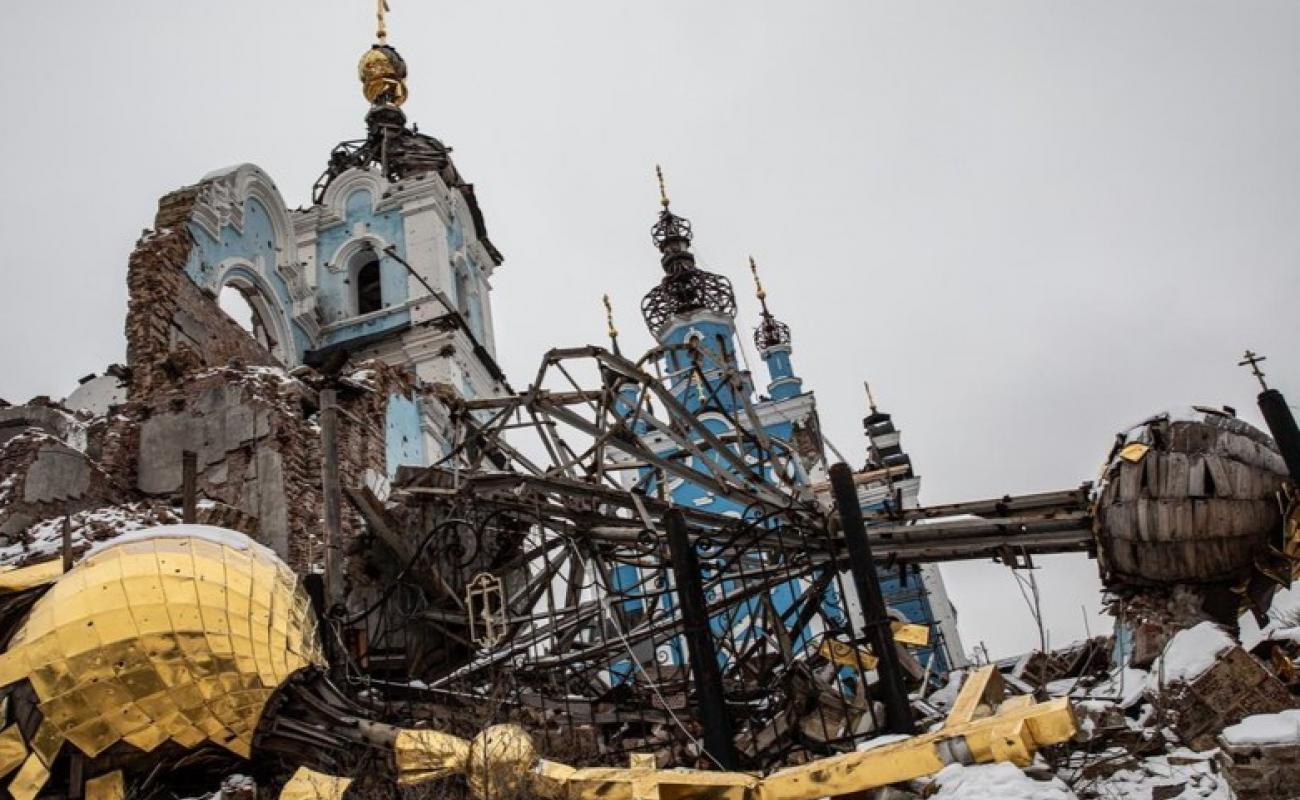How Russia is wiping out Ukraine’s UNESCO Heritage

The systematic demolition of Ukrainian cultural landmarks, from medieval cathedrals to ancient Greek ruins, forms part of a broader strategy to erase national identity through cultural warfare.
As the world celebrates UNESCO Foundation Day, Ukraine’s cultural heritage is being torn apart by Russia’s invasion. Since UNESCO’s founding in 1945, Ukraine has built up a legacy of seven World Heritage Sites. Yet, even these globally treasured landmarks haven’t been spared — some have been wiped out entirely by Russian aggression.
For Ukrainian sites with less legal protection, the outlook is often even bleaker.
As of November 2024, 1,096 Ukrainian cultural sites have fallen victim to the Russian invasion, according to Ukraine’s Ministry of Culture and Information Policy. UNESCO estimates the damage to Ukraine’s heritage sites alone at $2.4 billion—just a fraction of the destruction inflicted on the country’s cultural legacy.
The massive cultural destruction pushed the UN’s World Heritage Committee to list three of Ukraine’s major historical landmarks as endangered. Yet, even this status hasn’t shielded them from deliberate Russian attacks.
In January 2023, UNESCO added Odesa’s historic center to its World Heritage list and flagged it as endangered. Just six months later, Russia struck the city, damaging three museums and the Transfiguration Cathedral — dating back to the late 18th century.
Just two weeks before the Odesa attack, Russian troops struck a UNESCO buffer zone in Lviv, home to a fifth-century castle and squares dating back to the 13th-17th centuries. The site, which includes a synagogue and Orthodox, Armenian, and Catholic churches, is also listed as a World Heritage Site in Ukraine.
Throughout the full-scale invasion, the UNESCO buffer zone in Lviv has been battered by three major Russian strikes, including drone and missile attacks. The latest on 4 September 2024 left 19 architectural landmarks—mostly early 20th-century villas—reeling from the damage.
However, the worst damage was done to the Tauric Chersonese archaeological complex – the only UNESCO World Heritage Site in Crimea. Home to a well-preserved 5th-century BC Greek city, this globally significant site has been turned into the centerpiece of one of Russia’s most ambitious propaganda projects, with full backing from Vladimir Putin.
After Russia seized Crimea in 2014, authorities pushed forward with a massive “archaeological park” project, bulldozing over ancient Hellenistic ruins and untouched archaeological layers. The construction, which included military buildings, was backed by illegal excavations, unlocking access to up to 500,000 artifacts.
In July 2024, Russia rolled out the New Chersonese Archaeological Park, aiming to whitewash the Russian occupation of Crimea. By October, it had drawn 700,000 visitors, fueling the destruction of the UNESCO-protected site and its fragile archaeological layers.
On 30 May 2024, the PACE Culture Committee called out the erasure of Ukrainian cultural identity as a weapon in Russia’s war and part of its genocidal agenda. The resolution condemned the deliberate destruction of Ukraine’s cultural heritage as crimes against humanity, laying bare the Kremlin’s intent to erase its national identity.
